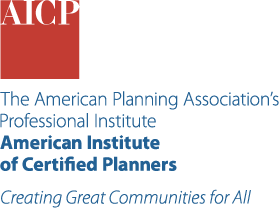Halftime Report: States Advance Housing Policy in 2025

As we pass the midpoint of 2025, housing policy remains a key focus in state legislatures. States are heading into the second half with momentum — calling bold plays to boost housing supply, modernize zoning laws, streamline permitting, and ease abundance challenges.
States Push Bipartisan Reforms Boosting Housing
Across the country, lawmakers are advancing a record number of housing supply bills, with bipartisan coalitions driving action in states from every region. The wave includes states that have long been engaged in reform, as well as those just stepping onto the field, tackling issues ranging from parking requirements to streamlined permitting, and shifting their focus from simply updating codes to accelerating housing production. Here's a state-by-state look at key housing developments so far this year.
Arkansas
Arkansas enacted a notable law expanding residents' ability to build accessory dwelling units (ADUs), part of a broader national trend toward allowing smaller, more flexible housing options. The act prohibits local governments from banning ADUs outright and limits their ability to impose restrictive requirements such as large lot sizes or owner-occupancy mandates.
The legislation reflects growing recognition of the role ADUs can play in addressing housing shortages — particularly for aging family members or renters looking for more affordable options. While local governments retain some control over design standards, the law shifts the balance toward increased housing access and property owner flexibility.
Arkansas enacted a municipal planning reform in April, with APA Arkansas leading the effort. The new law lets cities set up an administrative process to change a property's zoning or district designation if the request comes from the owner and matches the city's adopted land use plan. This optional process is meant to speed up straightforward rezonings and cut down on delays that can slow housing-friendly changes.
California
California took significant steps to streamline housing development by modifying the California Environmental Quality Act (CEQA), long viewed as a barrier to housing production. Two bipartisan bills were signed into law that allow qualifying housing projects to bypass prolonged environmental reviews — particularly those already aligned with local plans or located in urban infill areas.
These reforms are expected to reduce project timelines and lower development costs, without sacrificing environmental safeguards. As housing prices continue to climb, California's new approach signals a willingness to rethink long-standing processes in the interest of accelerating production.
Colorado
Colorado continues to build momentum on housing solutions. Lawmakers passed legislation allowing construction firms to opt into a voluntary program that limits construction defect claims, one of the primary barriers to increasing insurance costs and deterring condominium and multi-family housing projects.
In a collaborative effort between state lawmakers, planners, and local government, Colorado established the Regional Planning Roundtable Commission to help communities tackle housing, land use, and infrastructure challenges in a coordinated way. The commission will launch regional roundtables where stakeholders can identify shared priorities and align actionable solutions. This approach, shaped with input from Colorado planners, recognizes that housing issues cross municipal boundaries and require regionally tailored strategies rooted in local context.
Governor Jared Polis also prioritized innovative supply solutions by signing legislation encouraging factory-built or modular housing. These homes are constructed off-site, transported, and assembled on-site, offering a faster, more cost-effective path to increasing housing stock statewide.
Connecticut
Connecticut passed a bill to eliminate minimum parking requirements statewide, a significant shift aimed at lowering construction costs and promoting more walkable, transit-oriented development. This change builds on the state's growing focus on rethinking land use in urban and suburban areas.
The legislature also passed a wide-ranging housing bill, House Bill 5002, which tackled zoning reform, tenant protections, and solutions to the housing shortage. While the bill received support and cleared both chambers, it was ultimately vetoed by Governor Ned Lamont. Despite not becoming law, the proposal has generated significant momentum and could serve as a model for similar efforts in other states.
Delaware
Governor John Carney issued an executive order earlier this year establishing a workforce housing task force focused on streamlining permitting processes. The initiative aims to create a centralized approval system that reduces delays and improves coordination among state and local agencies.
By addressing regulatory barriers, Delaware hopes to accelerate the development of affordable workforce housing. The task force's recommendations are expected to inform future legislation and administrative reforms as the state works to meet growing housing needs.
Iowa
In May, Iowa enacted a new law that requires cities and counties to permit at least one accessory dwelling unit (ADU) on every single-family lot. The law sets a statewide baseline for ADU construction and limits the ability of local governments to impose restrictive conditions.
The legislation is part of a broader effort to expand housing access without major infrastructure expansion. By allowing ADUs across residential areas, Iowa aims to support aging in place, multi-generational living, and flexible rental opportunities — all within existing neighborhoods.
Minnesota
Minnesota advanced multiple housing priorities in 2025, though some of its most ambitious proposals remain on the table. The legislature introduced a bill that would prohibit cities from requiring off-street parking for new developments — part of a growing national trend to eliminate mandates that drive construction costs and limit density.
Lawmakers also introduced the "Yes to Homes" agenda, a multifaceted housing package that would help close the state's estimated 100,000-unit housing shortfall. Though the package did not advance this session, it drew bipartisan interest and is expected to resurface in future legislative debates.
Montana
Montana has rapidly emerged as a national leader in housing reform, earning headlines for what some are calling the "Montana Miracle" in 2023. In response to a sharp rise in home prices and mounting pressure on the state's housing stock, lawmakers from both sides of the aisle came together to pass a bold second wave of reforms in 2025.
One key measure focused on development standards. As originally drafted, the legislation would have allowed six-story buildings statewide, prompting concern about its blanket applicability. The Montana APA Chapter supported amendments to narrow the policy's scope to designated downtown areas and shift from a story-based limit to a more flexible, height-based standard. With these changes in place, the bill was signed into law by Governor Greg Gianforte.
Another major bill targeted parking regulations, prohibiting local governments from enforcing minimum parking requirements for residential and commercial developments except in limited cases such as ADA compliance or safety concerns. By reducing rigid parking mandates, this legislation aims to lower barriers to new development and give property owners more flexibility, particularly in urban areas where excessive parking requirements often hinder density and walkability. The bill was signed into law by Governor Gianforte.
New Hampshire
New Hampshire enacted a broad legislative package this year aimed at removing barriers to housing production. Over 10 housing-related bills were passed in July, reflecting a strong, bipartisan commitment to reform.
Key measures addressed development along private roads, subdivision approvals, and zoning rules related to accessory dwelling units, multi-unit buildings, and parking. The state also updated its building code and clarified the appeals process for local zoning decisions. These changes provide local governments with clearer tools for facilitating new development while protecting community interests.
Rhode Island
Rhode Island passed a housing reform package, led by House Speaker Joseph Shekarchi. The legislation touched every part of the housing pipeline — from permitting and zoning to density and redevelopment incentives.
Key components include amendments to the building code standards committee that establish a state building code office within the office of the state fire marshal. Other reforms clarify the processes outlined in the Zoning Enabling Act and Subdivision Act, addressing issues that have caused unnecessary delays and red tape.
Additionally, the package includes amendments to the Low and Moderate Income Housing Act aimed at clarifying development standards and findings, reducing subjectivity, and improving the predictability of the approval process.
Texas
Texas lawmakers passed several bills aimed at increasing housing supply by reducing land requirements and easing development barriers. One key measure gives homebuilders more flexibility to use smaller lots when constructing single-family homes in parts of the state's largest cities. By lowering minimum lot sizes, homes can be more affordable, and more land is available to build additional housing.
Another bill expands where apartments and mixed-use developments can be built by allowing owners of underperforming shopping malls, strip centers, offices, and warehouses to convert those properties into residential or mixed-use spaces, increasing housing options.
To support these efforts, lawmakers also raised the petition threshold for property owners objecting to zoning changes to 60 percent. Even if that threshold is met, city councils only need a simple majority to approve rezoning, preventing a small minority from blocking projects aligned with broader community housing goals.
Utah
Utah continued building on its integrated housing strategy in 2025. Governor Spencer Cox created the BUILD Coordinating Council to align land use planning across housing, transportation, water, and energy sectors. This executive action is intended to improve long-term infrastructure decisions and reduce conflicts between competing priorities.
The legislature passed housing-focused bills, including one that allows cities to grant density incentives in exchange for affordability guarantees and parking requirements.
Washington
Washington emerged with a large slate of bills advancing across multiple fronts:
- Parking requirements: prohibit cities from requiring developers to include parking spaces for housing units located near transit corridors, unless they can demonstrate a clear need for additional parking.
- Lot splitting: Legislation enables homeowners to divide their lots, making way for additional units and more flexible development.
- Rent increases: A new cap on rent hikes was enacted, along with stronger tenant protections.
The Next Play
As we reach halftime in 2025, states are charging down the field with bold housing policy plays, and one thing is clear: 2025 is shaping up to be a landmark year. The momentum seen so far — from sweeping zoning reforms to targeted affordability measures — is just the beginning. With more proposals in the pipeline and legislative sessions still underway in several states, the second half of the year holds great potential.
Top image: iStock / Getty Images Plus - gorodenkoff


